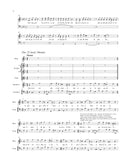| 作曲者 | Agostino Steffani (1653-1728)・アゴスティーノ・ステッファーニ |
| タイトル | Henrico Leone: Dramma per musica |
| 出版社 | Bärenreiter・ベーレンライター |
| シリーズ名 | OPERA Spectrum of European Music Theatre 5 |
| 楽器編成 | オペラ |
| 品番 | 979-0006567188 |
| 校訂者 | Christin Seidenberg・Matteo Giuggioli・Janette Seuffert |
| 言語 | イタリア語 |
| 形状 | LXXXI, 200 ページ・33 x 26.5 cm・1585 g・布装丁 |
| 出版年 | 2023年 |
| 出版番号 | BA 8821-01 |
| ISMN | 979-0006567188 |
Agostino Steffani's “Henrico Leone” is a work that stands out in the history of opera at the end of the 17th century due to the confluence of very different factors. The world premiere marked the inauguration of the newly built opera house in Hanover in 1689. At the same time, the Hanoverian Duke Ernst August used this “dramma per musica” to demonstrate his claim to power and for political propaganda. The libretto by Bartolomeo Ortensio Mauro is based on historical material that is not only to be understood as an allegory of the ruling dynasty, but is also directly reminiscent of the most famous ancestor from the Welf dynasty. Spectacular was not only the state-of-the-art stage technology that Ernst August had installed in the new opera house and which offered previously unknown possibilities for the opening opera. He also had first-class artists including the composer Steffani and famous singers such as Nicola Paris and Vittoria Tarquini at his disposal.
Furthermore, the composition itself offered something astonishing for the time. The introductory Sinfonia already uses the thunder machine to represent the sea storm and the seamen's choir with its cries for help. Even before the Sinfonia including the seamen's chorus ends, Steffani's entry in the score, “S'alza la Tenda.”, demands that the curtain rises during the Sinfonia. This allows the audience to see the staging of the shipwreck and thus the stage action already starts in the Sinfonia. Moreover, the composer knew how to move virtuosically between the Italian and French styles, and there is no lack of 'French elements' within this in many parts Italian opera. For example, Steffani drew on the divertissements of the tragédie lyrique as a model for Henrico's aria/menuet “Gratie à voi placide menti” (No. 23) at the end of the first act.
This edition of “Henrico Leone” enables a milestone of early opera history to be made accessible. The musical edition offers the 'definitive version' in the main section and the earliest layer of composition in the appendix. The text edition takes on not only the text of the stage work itself, but also the paratexts (including their French and German translations).
The fifth volume of the OPERA series consists of the cloth-bound volume and the Edirom on a credit card USB flash drive. Further information on the work and the OPERA series can be found at: www.opera-edition.com.









